Issue 10, August 26, 2021
Late Summer Leaf Diseases
Keep an eye out for the following shade tree diseases. They become evident in the waning days of summer.
Guignardia Leaf Blotch
Guignardia leaf blotch is a fungal disease that affects the common horsechestnut (Aesculus hippocastanum) and other Aesculus species. The disease is an annual occurrence on many host trees, with symptoms intensifying throughout the summer.
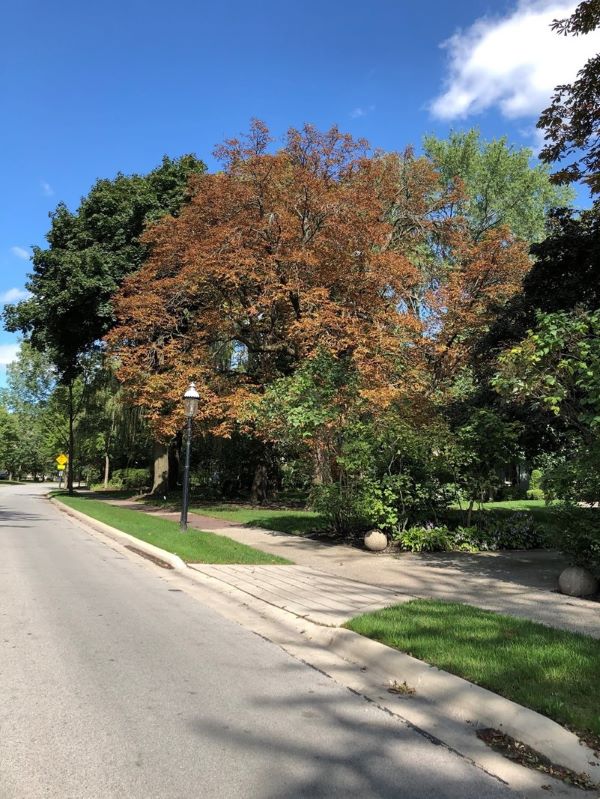
Photo 1. Guignardia leaf blotch on common horsechestnut. Travis Cleveland, University of Illinois
Symptoms initially appear as rapidly enlarging, irregularly shaped, water-soaked areas. Affected areas eventually turn red-brown with a yellow halo that merges with the surrounding healthy green tissue. Tiny black fruiting bodies appear within lesions, which help to distinguish from environmental scorch. Severely infected trees often defoliate prematurely.
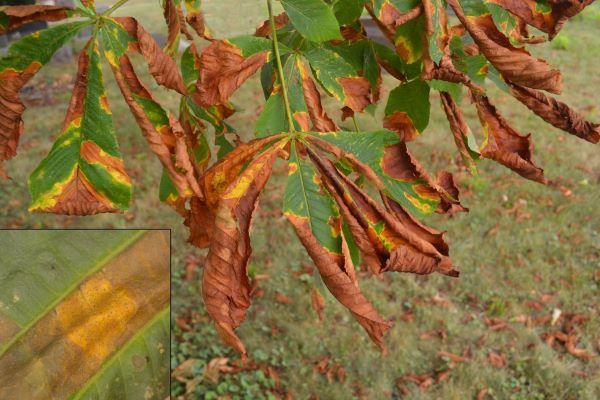
Photo 2 Guignardia leaf blotch on common horsechestnut (Aesculus hippocastanum). Inset Image: Fungal fruiting bodies help to distinguish this disease from environmental scorch. Travis Cleveland, University of Illinois
Guignardia leaf blotch is mostly an aesthetic disease. Severe symptoms occur late in the season and won't affect the tree's overall health. Disease management should start with adjusting cultural practices. Prune trees to promote airflow through the canopy. Rake, destroy, or dispose of fallen diseased leaves at the end of the season. Fungicide sprays can also be applied beginning at bud-break. They will help maintain the appearance of the tree but are unnecessary to maintain tree health. Additionally, chemical controls may be cost-prohibitive due to the size of affected trees.
Tubakia Leaf Spot
Tubakia leaf spot symptoms are often confused with those of anthracnose. Oak anthracnose symptoms usually appear in late spring to early summer, May - June. In contrast, tubakia leaf spot symptoms appear in late summer, July - September. Tubakia leaf spot lesions will vary with host susceptibility and environmental conditions. The lesions start as small water-soaked areas. They become evident as they enlarge and transition to a reddish-brown color (Photo 3). Severe infections may cause premature leaf drop. Symptoms tend to be most severe on the lower branches, where moisture accumulates and remains for more extended periods (Photo 4).
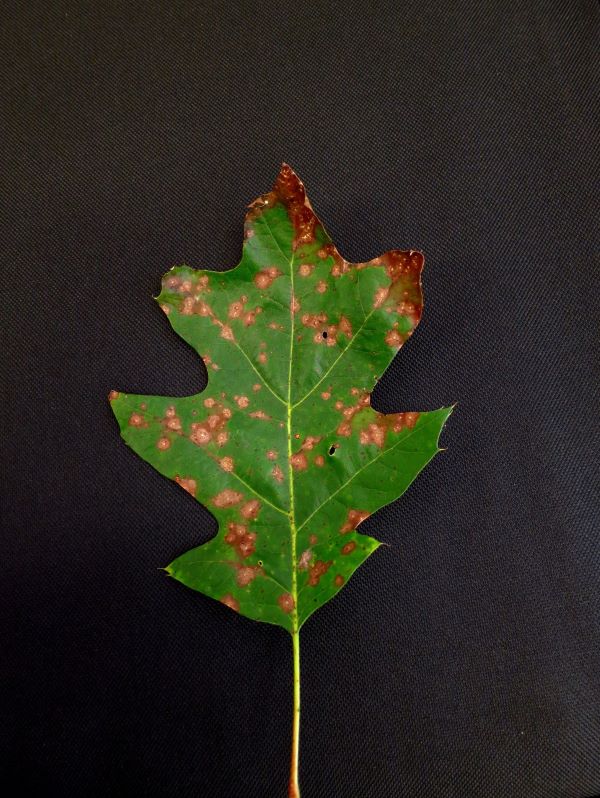
Photo 3. Northern red oak leaf with numerous Tubakia Leaf Spot lesions. Travis Cleveland, University of Illinois
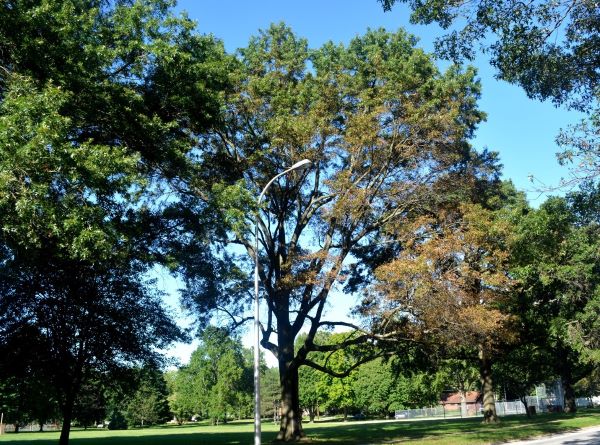
Photo 4. Lower branches of an oak infected with Tubakia leaf spot (Urbana, IL. Sept. 2016) Travis Cleveland, University of Illinois
Tubakia leaf spot is more prevalent in years with abundant rainy weather and moderate temperatures. These conditions help spread the pathogen and promote new infections. The disease is much less common growing seasons with predominately dry weather.
While the symptoms may appear alarming, the disease develops late enough in the season that there are no long-term adverse effects on tree health. As a result, treatment with fungicides is not usually recommended. Raking and removing fallen leaves may reduce inoculum in the surrounding area, thus limiting disease occurrence the following growing season. Promoting tree vigor and alleviating any potential stresses to the tree is also recommended.
Bur Oak Blight
Bur Oak Blight (BOB) is a close relative of tubakia leaf spot. BOB is caused by the fungal pathogen Tubakia iownesis, and has the potential to contribute to tree mortality. As the name indicates, this disease pathogen primarily infects Bur oak, particularly Quercus macrocarpa var. oliviformis. Dr. Tom Harrington of Iowa State University was the first to identify the BOB pathogen. Results from his research suggest that the pathogen is likely native to the region and has only recently become problematic due to a significant environmental change. Wet springs, with significantly more precipitation, have likely created a favorable environment for disease development.
Symptoms
The most notable BOB symptoms appear in August and September. As the BOB pathogen kills leaf veins, a characteristic wedge-shaped necrotic area forms near the apex of the leaf blade (Photo 5). Coalescing lesions and expanding vein necrosis may cause the leaf to die. Severely affected trees may have significant leaf mortality and/or leaves with scorched appearance (Photo 6). Extensive premature defoliation is common, but many diseased leaves remain attached to the tree into the winter, well after healthy Bur oaks have dropped their leaves.
The retention of diseased leaves favors the pathogen and its spread because overwintering fungal fruiting bodies remain attached to the tree and never lose contact with the host. In late April and May, released from these fruiting bodies about the same time as new leaves are emerging and expanding. Wet conditions promote spore dispersal to newly expanding leaves. Infection occurs before the leaves are fully developed. However, there is a latent period between infection and when the first symptoms.
Initially, infections may be limited to the lower branches. Symptoms intensify from year to year and progress from the lower limbs throughout the canopy.
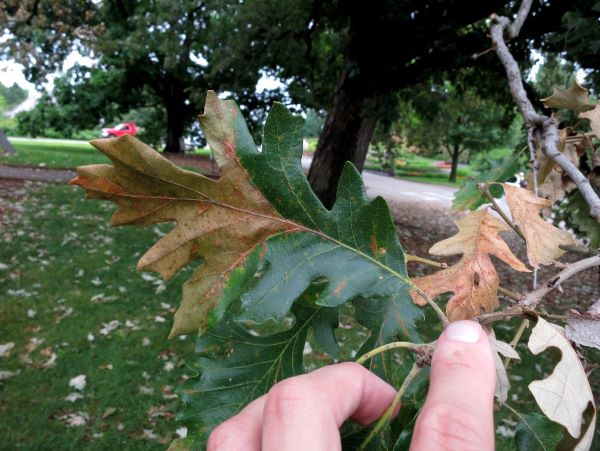
Photo 5. Wedge-shape lesion characteristic of Bur Oak Blight. Travis Cleveland, University of Illinois
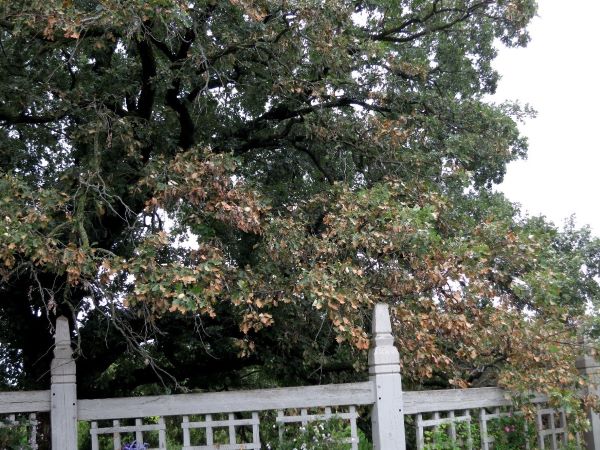
Photo 6. Bur oak with lower canopy affected by Bur Oak Blight. Travis Cleveland, University of Illinois
Diseased leaf retention is currently one of the best ways to identify this disease in the field. Look for leaves and petioles attached from the previous growing season. Infected petioles will have black pustules or scars from previously attached pustules (Image 7). The other species of Tubakia that infect Bur oak are not known to produce these overwintering pustules.
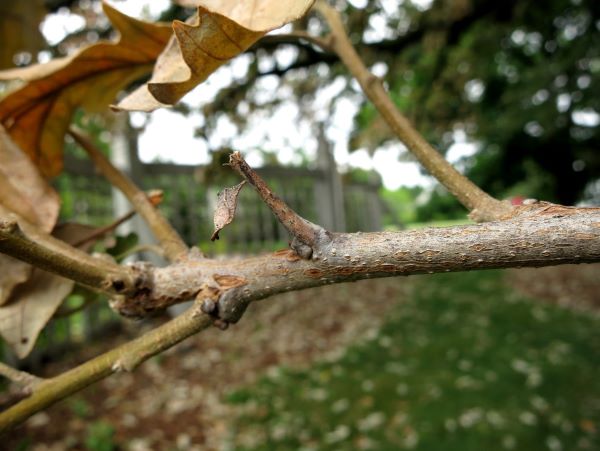
Photo 7. Branch with diseased petiole still attached from the previous growing season. Note the small black pustules. Travis Cleveland, University of Illinois
Several successive years of severe infection and defoliation may severely weaken the host tree. Tree mortality has been attributed to secondary invaders such as the two-lined chestnut borer. Trees infected with BOB appear to have increased susceptibility to these secondary invaders.
Management Strategies
- Fortunately, not all bur oaks will be affected by this disease. Many bur oak trees have a resistance to this pathogen. It's not uncommon to observe a healthy, unaffected tree growing near a severely infected tree.
- If you suspect a BOB infection, have the disease diagnosis confirmed by a laboratory. Suspect BOB samples can be submitted to the University of Illinois Plant Clinic. Collect branches and twigs with symptomatic and healthy leaves. Be sure to include branches with petioles from the previous growing season still attached (See Photo 7 for an example)
- Boosting tree vigor may help the tree to limit and prevent secondary invaders. Pruning and removing branch dieback has been suggested to help reduce borer populations
- For high-value trees, Iowa State University found trunk injections of propiconazole to be effective at controlling the disease. Applications require specialized equipment and will need to be made by a certified professional.
- Injections should be made in late May or early June, just after the leaves have fully expanded.
- The recommended application rate is 8-10 mls per 1" DBH. Higher applications rates reportedly resulted in phytotoxicity to leaves. The rate will also need to be adjusted if the tree has significant branch dieback in the canopy.
- One application should last several years. Iowa State currently recommends repeat application only after a severe outbreak re-occurs.
Bacterial Leaf Scorch
Bacterial Leaf Scorch (BLS) is a serious infectious disease with a wide host range of trees and shrubs. The disease causes the slow decline of the host, resulting in host death. It is caused by the bacterium Xylella fastidiosa.
Scorch symptoms appear on leaves in early to midsummer and gradually intensify as the season progresses. Affected leaves may turn a yellow/green color and then turn brown, usually from the margin of the leaf inwards (see picture). Older leaves are often affected first, and an individual branch or section of branches usually becomes discolored at the same time. Symptoms are generally not scattered throughout the crown. Branches will leaf out the following spring, but symptoms will re-appear and slowly spread through the crown of the tree over the course of subsequent seasons.

Photo 8. Red oak leaves from a tree infected with BLS. Travis Cleveland, University of Illinois
The symptoms are easily confused with drought stress, cultural problems, cankers, and, in oak trees, oak wilt. It can also be confused with Verticillium wilt in other host tree species. Submitting a sample to a plant diagnostic laboratory is the only way to diagnose BLS definitively. The University of Illinois Plant Clinic conducts BLS testing in late August or early September because the population of bacteria within the affected tissue increases as the season progresses. The higher pathogen populations in late summer allow for a more accurate test.
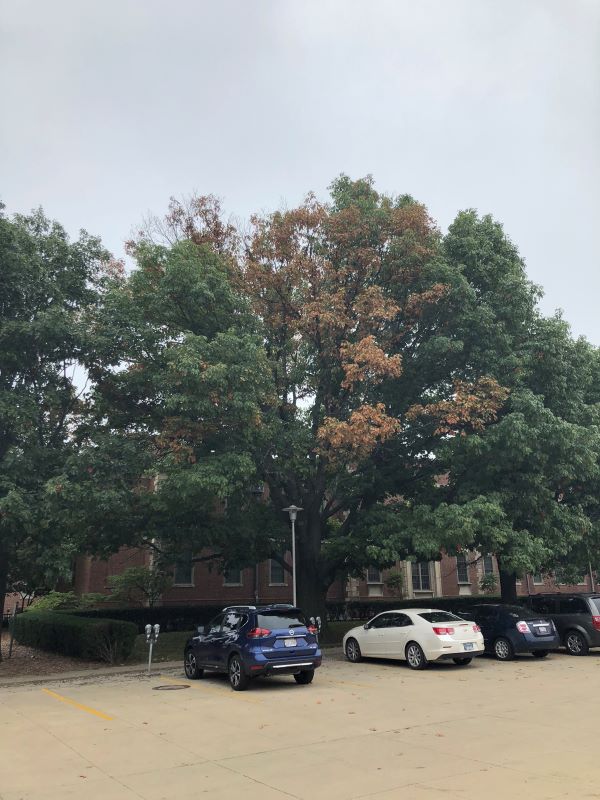
Photo 9. Northern red oak infected with bacterial leaf scorch. Travis Cleveland, University of Illinois
Management for trees affected with BLS consists of increasing tree vitality by mulching the base of the tree to retain moisture, watering during periods of dryness lasting more than two weeks, pruning out dead branches, and fertilizing when appropriate. While trunk injections with antibiotics have been shown to be effective at delaying symptom development, they do not cure the tree, and the injection sites open new paths of entry for organisms that decay wood. Over time, repeated treatments can severely weaken the tree. Choosing non-susceptible hosts to plant near affected trees is also recommended to prevent the spread of disease.
Author:
Travis Cleveland